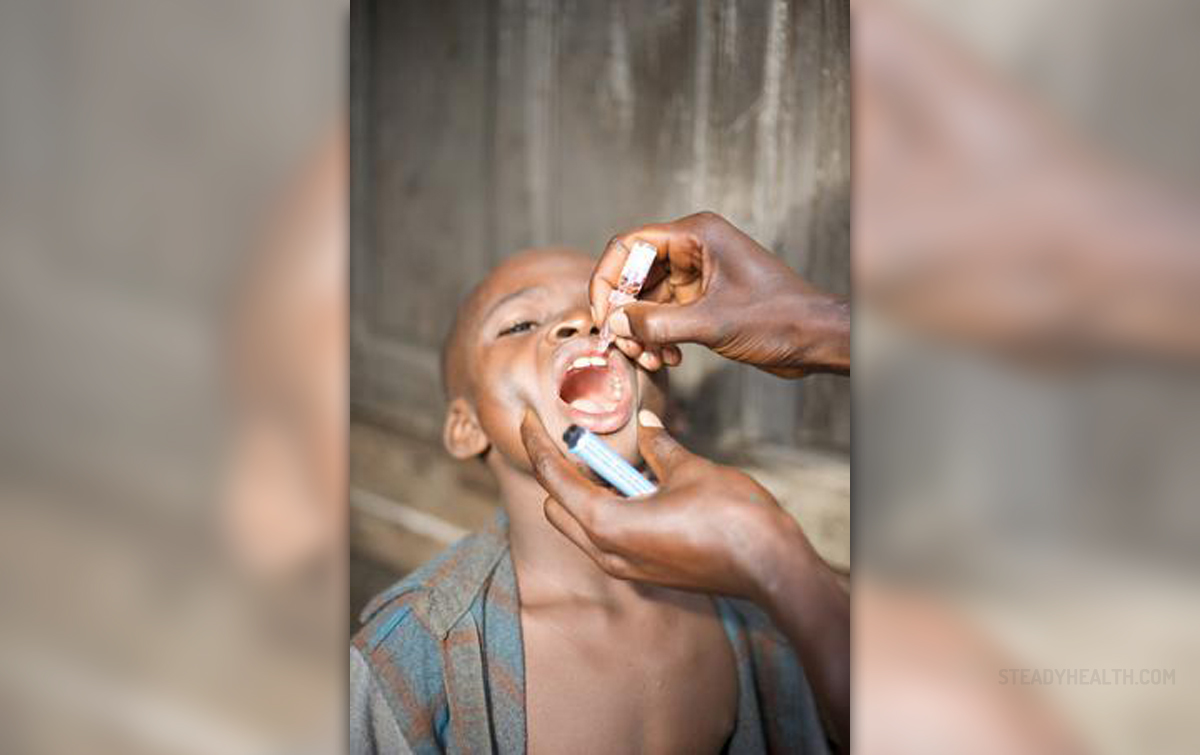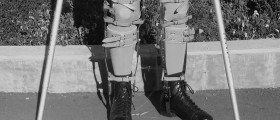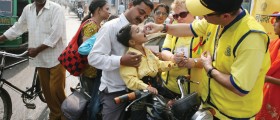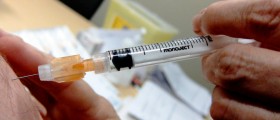
Polio or poliomyelitis is a viral infection caused by poliovirus. The infection is transmitted via mouth and nose excretions. After entering the body the virus attaches to intestinal cells, reproduces and leaves the body in the feces. This means that the virus can be spread by direct contact with infected stool or even if one consumes food or water contaminated by poliovirus.
The symptoms of this viral disease vary accordingly to the degree of the infection. Polio infection has two forms paralytic and non-paralytic. Non-paralytic polio is quite common form of the disease. There are basically no symptoms or if they are present they are similar to symptoms of flu. Patients may feel tired, have headache and high temperature. Sometimes they complain about sore throat. The symptoms withdraw within two weeks. Paralytic polio is rather serious form of the disease. The symptoms are more severe as in this case nervous system and spinal cord are affected by the infection. They reflect in problems with breathing and swallowing, retention of urine and constipation. The patient may experience abnormal sensations, suffer from headaches and change in moods. The disease can be complicated with muscle spasms or even paralysis. The lethal outcome in this form of disease is mainly caused by respiratory failure.
The diagnosis is set after the the data has been taken from the patient or the entourage. If there are no data of previous vaccination and the symptoms point to polio the diagnosis is most definitive. Still in most cases the samples of cerebrospinal fluid are taken to rule out the possibility of other conditions such as meningitis. The definitive diagnosis is set with assistance of viral cultures and the specific levels of antibodies to polio virus.
The definitive cure for polio does not exist. The prevention is the only option. The treatment of paralytic polio has to concentrate on possible complications such as respiratory failure. Urinary retention can be properly dealt with by certain medications. In case of sequelas the patient needs to wear leg braces for life unless physical therapy or even orthopedic surgery help in re-establishing of the previously normal leg function.
The vaccine against polio virus has been given to children regularly since the middle of the 20th century. In 1955 Dr. Jonas Salk developed an injectable form of inactivated vaccine. In 1961 an oral form of virus vaccine was developed by Albert Sabin. These two men are responsible for the decrease and almost complete eradication of the polio infection in some parts of the world.
The vaccine is the only way of preventing the poliomyelitis and possible fatal complications. Only in India and Asia this disease is still present due to irregular vaccination.

















Your thoughts on this
Loading...